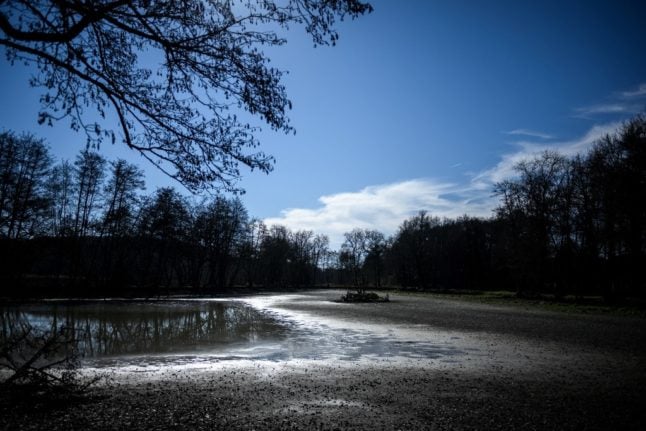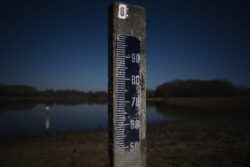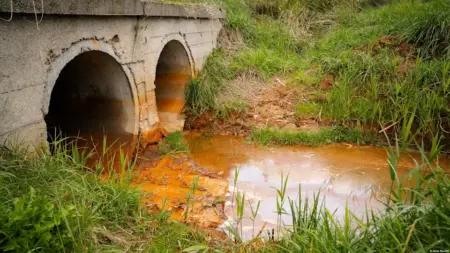France’s unprecedented winter sees 31 days without rain
France has broken an unprecedented record of going 31 days without significant rainfall during winter, according to the country’s weather service, Meteo France.
The lack of precipitation, with less than one millimetre of rainfall over the entire country daily since January 21, has raised concerns about water reserves in parts of Europe that are still recovering from last year’s severe drought.
Europe endured its second-hottest year ever in 2022, with France, Britain, Spain and Italy setting new average temperature records.

The heat was compounded by severe drought, unprecedented in centuries, across the region.
Water restrictions in place
Water restrictions are in place in Barcelona and large parts of Spain’s northeastern region of Catalonia, due to the lack of rain.
In other areas, measures include banning the use of drinking water to wash homes or cars or to fill swimming pools and reducing the amount of water used for irrigation.
It is the first time that such a long dry spell has occurred in winter, as per records going back to 1959. Winter is typically an important period for replenishing groundwater levels with rainfall.
However, Meteo France suggests that the dry period is unlikely to last much longer, as rain is predicted in the southern part of the country on Wednesday. The previous record for a winter dry spell in France was 22 days in 1989.

Are drought and climate change related?
What is drought?
Drought is a natural event that occurs when an area receives less precipitation than its usual or expected amount for an extended period. It is a prolonged period of abnormally dry weather that can result in water shortages, crop damage, and other negative impacts on the environment, economy, and society.
Droughts can occur in any climate and can range from moderate to severe. In some cases, droughts can last for years and can cause significant damage to ecosystems and agricultural production.
The impacts of drought can be widespread and severe. They can cause crops to wither and die, leading to food shortages and increased food prices. They can also lead to water shortages, affecting human populations and wildlife. Droughts can also increase the risk of wildfires, as dry vegetation is more susceptible to burning.
Droughts are often caused by a combination of factors, including natural climate patterns such as El Niño, as well as human activities such as water overuse and climate change. While droughts are a natural occurrence, their frequency and severity may be increasing due to climate change, which can exacerbate already dry conditions and make them more severe and longer-lasting.
Are drought and climate change related?
Yes, there is a strong relationship between drought and climate change. Climate change refers to the long-term changes in global temperature and weather patterns, and it can cause more frequent and severe droughts.
As the Earth’s temperature rises due to increased greenhouse gas emissions, the atmosphere can hold more moisture. This causes more extreme precipitation events, which can lead to both flooding and drought. While some regions may experience more rainfall overall, others may experience longer and more severe droughts.
In addition to changes in precipitation, higher temperatures can also lead to increased evaporation and higher rates of water loss from soils, plants, and bodies of water. This can further exacerbate drought conditions, making them more severe and longer-lasting.
Human activities, such as land-use changes and overuse of water resources, can also contribute to the severity of droughts. Deforestation, for example, can reduce the amount of moisture that is returned to the atmosphere through evapotranspiration, leading to drier conditions. Similarly, overuse of groundwater resources can deplete water reserves, making them more vulnerable to drought conditions.
Overall, while droughts are a natural occurrence, climate change can make them more frequent, severe, and longer-lasting, which can have significant impacts on ecosystems, agriculture, water resources, and human populations.





